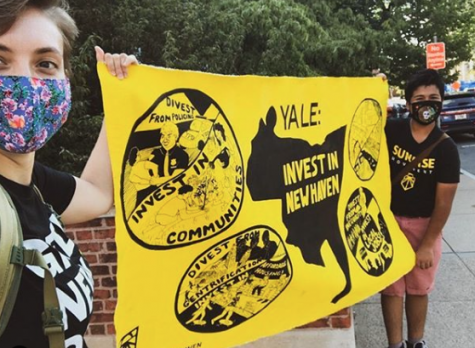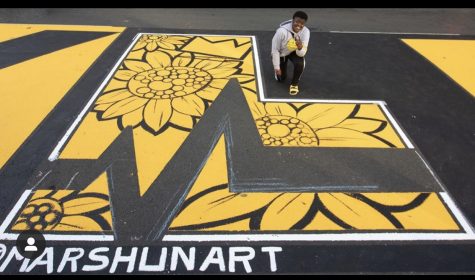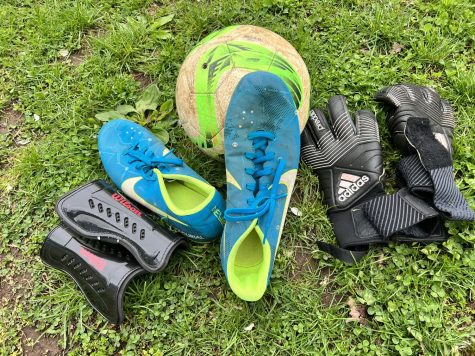Kids Have Powerful Voices. And They Are Using Them.

There are a lot of problems in our world and our country that need fixing. Adults are in charge. But more and more, young people are speaking up.
“Youth activism is important,” said Dave Cruz, a former East Rock Record reporter who is now a ninth grader at Wilbur Cross High School. There is a lot of discussion in the country about social change, but often, he said, youth “are left out of these conversations.”
Mr. Cruz said that kids care about what’s going on in their communities and want to be heard. He got involved in the climate change movement last June by contacting a friend.
“I asked my friend who knew about it,” he said. “I asked, ‘How can I join this group?’” Mr. Cruz is now an organizer at Sunrise New Haven, a climate change organization. He is also an office manager at the Citywide Youth Coalition.
Activism has become really important to Mr. Cruz. “This passion comes from anger and desire to make society a better place,” he said. “It is really my purpose.”
“Youth activism is important.”
Across the country and around the world, we see more young people not only taking part in protests — for Black Lives Matter, social justice, COVID-19 safety, voting and elections, climate change, police violence and anti-racism — but leading them.
Young people are also using social media platforms like Twitter and TikTok to learn about and spread information on the issues they care most about. While President Donald Trump has used Twitter to communicate with supporters, many youth are quick to call out what they think is misinformation and share about ways to get engaged.
This past summer, teens also used Twitter, Instagram and Tik-Tok to prank President Trump, getting people to sign up to attend his campaign rally in Tulsa, Oklahoma. Mr. Trump boasted that a million people registered, but only a few thousand actually showed.

At East Rock Community & Cultural Studies Magnet School, there are some mixed feelings about youth activism. According to The East Rock Record Fall 2020 survey, only 41 percent said that kids should get involved in social issues and protest. At the same time, almost one-third had already taken part in a march or protest for an issue they cared about.
But the survey also showed that students think protesting works and is OK to do. Eighty-two percent said they think that protesting helps create social change. Also, 80 percent said that athletes should be able to join in different forms of protest at their games and 61 percent said that it was OK to take a knee during the National Anthem.
Schools can also be places for students to learn about issues affecting their communities, including how to get involved, said Carolyn Ross Lee, the Title IX and overall equity coordinator for New Haven Public Schools.
She said schools can help teach students leadership skills and train them to get civically engaged (the district is seeking grant funding to do this, she said).
Ms. Ross-Lee said an NHPS survey asked high school students which top five issues they would consider working on through the Citywide Student Council. The top five were: Anti-racism, Black Lives Matter, Climate Change, Mental Health and Healthcare. Many students also expressed interest in LGBTQ+, Equity Policies and Food Insecurity.

Young people have also found other ways engage with their communities and express their views, including using art as a form of activism.
New Haven artist Candyce John, who goes by the name “Marsh,” celebrates the use of the art to express your thoughts and address what is going on in the world.
“Visual art has a kind of power that is unique,” said Marsh, who designed the Black Lives Matter street mural that was painted near The Green in New Haven this summer.
In an interview with East Rock Record reporters, she said that her art has been especially important this year with people’s interactions restricted because of the pandemic. She said social media also has played a big role in her ability to share her art with an immediate audience and create community.
That matters now, Marsh said, because visual art “touches something that you reading or hearing can’t.” Art’s power to get an emotional response is useful in activism, she said.
“My biggest thing with my art is, I want to evoke emotion … I want you to think about it, to remember it, to feel it.”
“My biggest thing with my art is, I want to evoke emotion. I don’t care if you don’t like it. I don’t care if you hate it. I don’t care if it goes against what you think,” she said. “But I want you to think about it, to remember it, to feel it.”
Beyond protest and art, young people have focused on voting as a form of activism. For the 2020 Presidential Election, many more Americans voted than in any other presidential election in modern history — and young people turned out in record numbers.
Youth who could not vote (under 18) encouraged others to vote. Shannel Evans, New Haven Democratic Registrar of Voters, said youth turnout in the city was helped by efforts to bring important issues to students’ attention and register all eligible high school voters.

“Kids are the future,” she said. “It’s important for them to get involved in any way they can.” She said she was also amazed and the huge turnout of young people volunteering to work the polls during the election and getting involved in community service efforts.
Ms. Evans hopes that the huge interest in the national elections will turn into involvement in local elections. “It is really important for us to keep going,” she told reporters.
Edited by Bryanna Moore, Keneane Ejigu.




